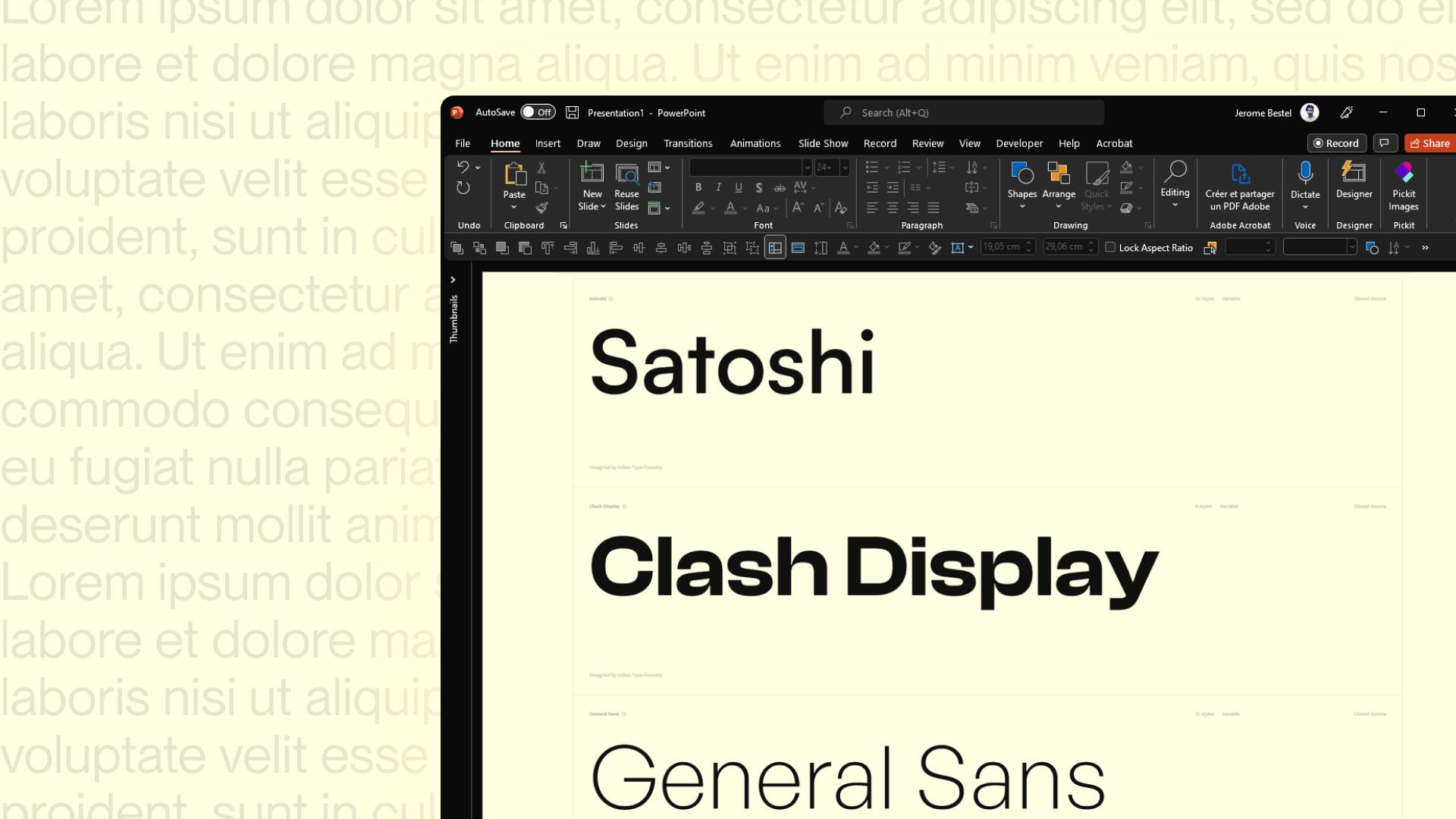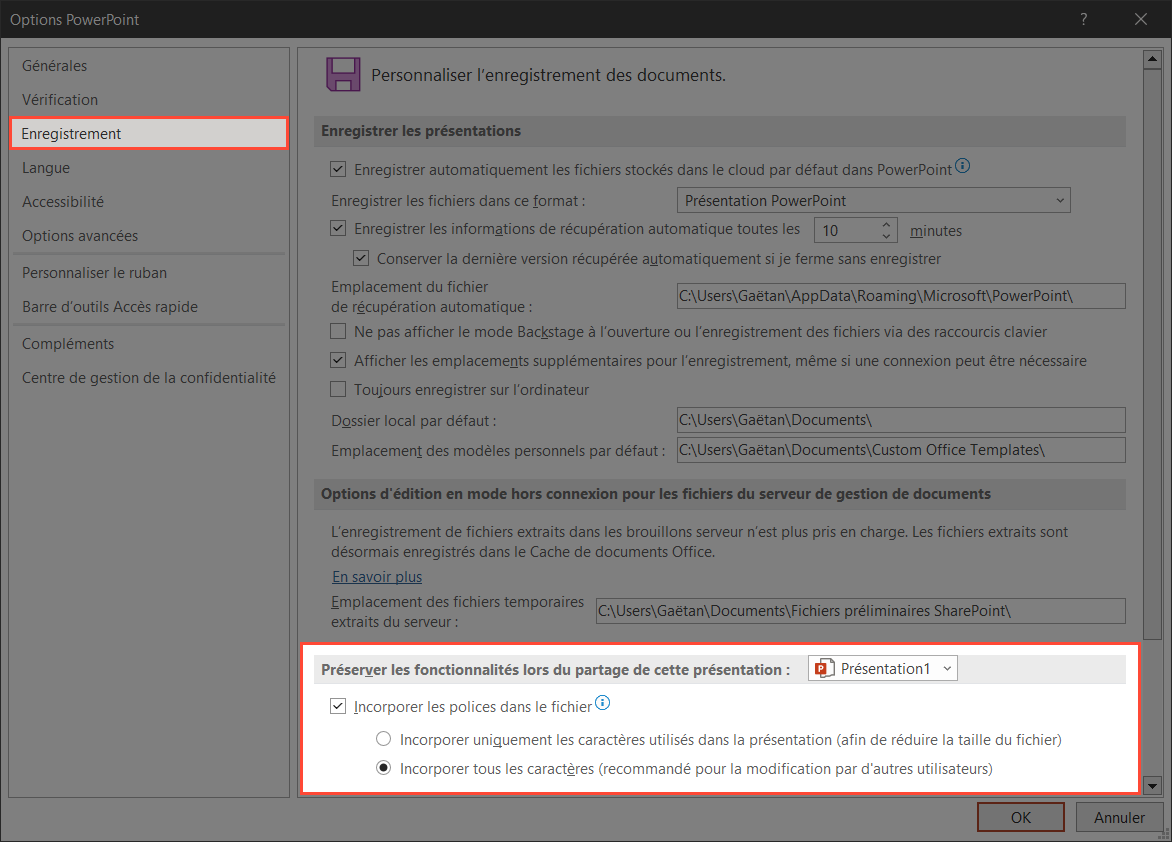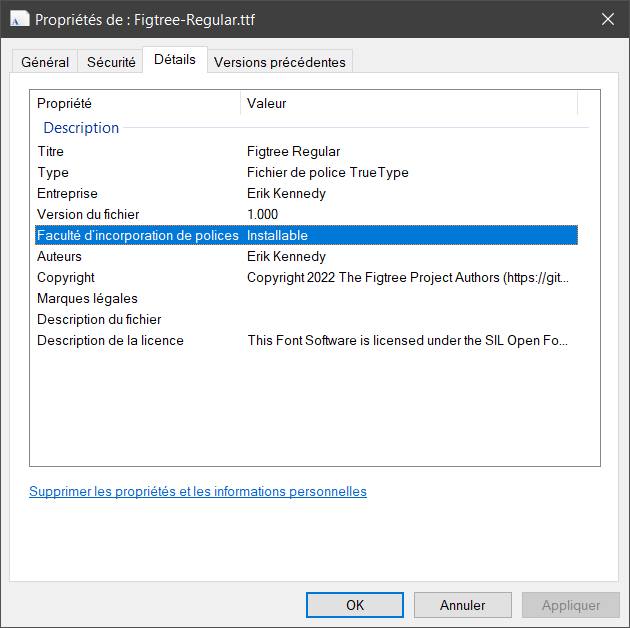How to embed fonts in PowerPoint and make sure everyone can open them
Use custom fonts and make sure they are read correctly
Author
Gaëtan Spiga
Updated on
March 18, 2025
Created on
January 28, 2025
Category
Tutorials


You'll find plenty of articles that cover the essentials, but few that actually explain how embedded fonts work in PowerPoint. We tell you everything in this article.
After reading our article on the most beautiful free fonts to use in your presentations, or browse the productions of our presentation design agency, you might be wondering what's the point in using custom fonts if they won't be displayed to people who open your presentation without installing the fonts first. However, you should know that in three clicks, you can integrate most fonts directly into your PowerPoint file.
How to incorporate font files into your PowerPoint presentation
Let's start with the simplest part of this article: all it takes is a checkbox in your PowerPoint file options to incorporate all of your fonts into your presentation. No need to even search for your font files on your computer, PowerPoint itself takes care of retrieving all the fonts you used in your slides.
In PowerPoint, open the tab File then click on Options (at the bottom in the left column). Select Registration in the window that just opened then click on the box Embed fonts in the file. Then be sure to check the box as well Embed all characters, in order to avoid missing characters at the slightest change in text (in addition, the difference in weight is negligible considering that typography files are generally very light unless they include extended glyph tables (sinograms for example).

That's it, you've now integrated all of your fonts into your PowerPoint file. This is how I would have liked to end this article, but unfortunately there are several cases in which other people will not be able to see your embedded fonts.
Incorporate non-royalty-free fonts?
Since PowerPoint integrates font files into the presentation, it allows the embedded fonts to be distributed in a way. Non-royalty-free fonts are generally digitally protected and therefore cannot be incorporated. If you use paid fonts, it is very likely that they are protected. You can check if a typeface is protected in Windows by right-clicking on your file (usually a.ttf or.otf), then on Properties. Finally, go to the tab Details and you will find a line Faculty of font embedding. If it is displayed Installable or Editable, you shouldn't have any problems. On the other hand, if it is indicated Preview/Print, you can only embed the font for reading and not for editing (a user who does not have the font will receive a message when opening the file allowing them to choose between opening the presentation read-only, or deleting protected fonts). Finally, in some cases the font is indicated as Restricted, in this case it simply cannot be embedded (not even read-only).

If you're working on the Adobe suite and syncing your fonts via Creative Cloud, be aware that they won't be embedded in PowerPoint. We recommend using Google Fonts, which are royalty-free and the vast majority of which can be incorporated into your presentations. This is the case with all the fonts we recommend in our Guide to fonts to use in PowerPoint.
The case of missing administration rights
When you embed fonts into your presentation, every time another user opens it, PowerPoint will temporarily install the files on their system. But to do this, you need to have administrative rights on the computer. In some companies with a strict IT policy, you may not have administrative rights on your session (you cannot install software on your computer without the intervention of the IT manager). If this is the case of someone you share your PowerPoint file with, they won't see the fonts you've embedded.
Software other than PowerPoint and Mac
Although PowerPoint has offered this feature almost always, it is not compatible with other software. Indeed, even if the fonts are well saved in your file, the software must still be able to temporarily install them on your computer. Since other software such as Keynote does not offer to embed fonts, they also do not plan to install them temporarily on your computer when you open a presentation. On the other hand, Google Slides allows you to use most Google Fonts natively, which he will therefore be able to read without problems whether you have integrated them or not. Finally, this feature only appeared in 2021 on the Mac version of PowerPoint. So make sure you have the latest version of PowerPoint (or updated Office 365) if you're working on a Mac.
Change theme fonts in mask mode
After choosing your typography, you can change the theme fonts by accessing the slide master. To do this, go to the tab Display from PowerPoint, then click the button Slide mask. In this new tab, click on the button Polices, then the option Customize fonts...
There you can set up two fonts: one for your titles and one for your body text. They will always be displayed at the top of the list in the typeface selection drop-down menu.

In summary
- First, check whether your policy can be incorporated. If you downloaded it via Google Fonts, you are sure that it can be incorporated.
- Consider the administrative rights of your employees in their company.
- Check the version of PowerPoint, especially if you are on a Mac.

.svg)



















